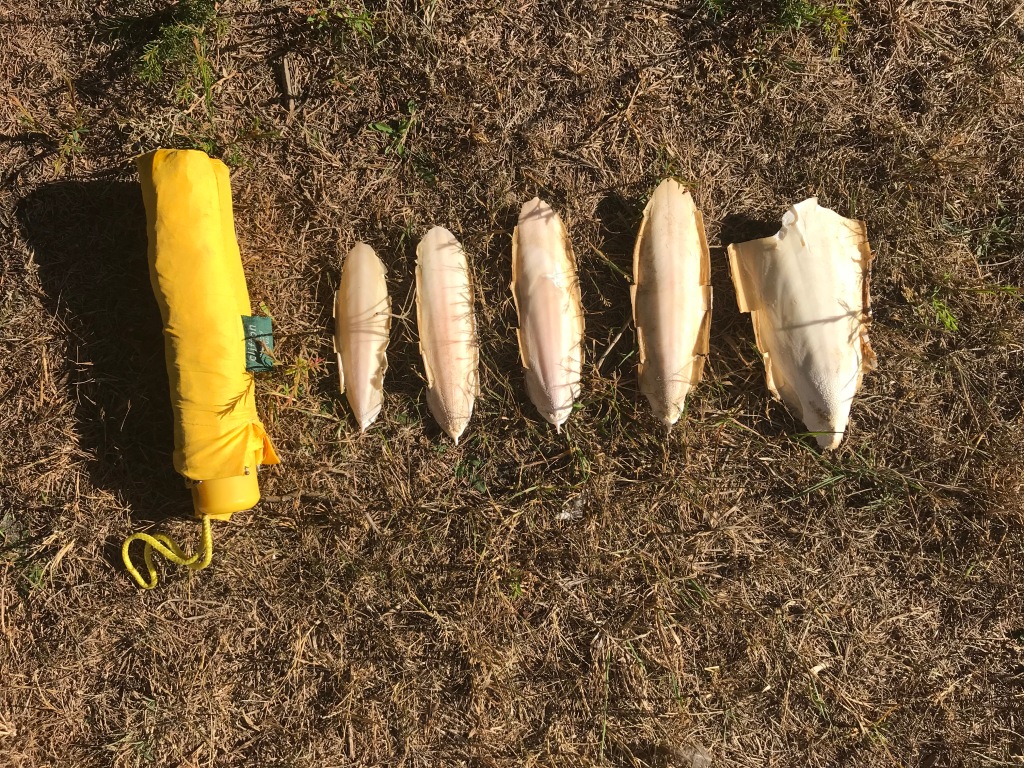From Ashes to Ashes

Tasmanian Ashes
Hobart was smashing a March heat record with a sweltering 38°C and choppers plied the sky trying to dampen the wildfires. We were up on the island’s northern coastline where the temperature was more mellow because the hot, thuggish northerly winds cool as they travel across Bass Strait from the Australian mainland to Tasmania, then heat up again when rushing south across the island.
We were in Devonport because we were taking the ferry over to Melbourne the next day and as the dogs were going to have to endure a long day in the car while we relaxed on the upper decks, we treated them to the dog beach.

The beach is short and that day with the tide out the sand was a broad expanse, with a rivulet making a shallow entrance to the sea right down the centre. Seeking shade, we made for the eastern side where amongst the rock pools we found (all within a tiny area) litter that we gathered up. Tinnies, mostly, and pieces of plastic and I thought about the irony – humans offended by biodegradable animal scats and dog poop but fine with leaving long enduring plastic lying around that kills and maims other species. It’s a simple cognitive dissonance it really shouldn’t be that difficult for us to overcome. We are the filthiest of species.

Tethya
The dark basalt rock was laced with tubeworms, limpets, brown seaweeds and neptune’s necklace. The barnacles and mussels were small. I found cockles and something new entirely – a small, round thing, soft but not squishy, living quietly beneath a rock. It is tethya,aka a golf ball or ball sponge. Another sponge close by looked like an old brown brain.

It can be particularly difficult to identify rock hugging life forms that manifest as coatings in rock pools. It can take long periods of quiet observation of a rock surface to even see the diversity of everything that’s there. Hunting on the web later, I discovered that almost 1/3 of the world’s tethya are found in Australia. It’s possible that some arrived unnoticed as migrants and interesting to consider that as convicts stepped ashore in Van Diemens Land, fellow travellers on the ship’s hull may have broken away and taken root along the coastline.

A sponge is a close knit community of tiny individuals and when you’re looking at that diversity of coatings on the rocks you can usually tell a sponge because it is thick and tough and perforated with tiny pores ‘that look like miniature volcanic craters’ (Zell). These communities can be smooth, matt or shiny, but they are still sponges. They reproduce sexually and / or asexually – and this handy capability and their simple water filtering lifestyle is probably two reasons why they’ve been around for over 500 million years and counting.
Cuttlefish

Up on the wrackline I found cuttlebones, faintly pink, like the others I’ve discovered from Eaglehawk Bay on the Tasman Peninsula and the Bay of Fires in the north east. These are possibly Sepia novaehollandiae, the New Holland Cuttlefish.

Mainland Ashes
That day, lazily spent rock pool exploring, was a peaceful interlude bracketed by those fires in southern Tasmania and fires in Victoria. Driving through Gippsland several days later, sunlight was snuffed out, day eerily turned midnight black and it was a relief at Lakes Entrance to come into the light again, despite the smoky air.
I wasn’t thinking about the tethya by then, but it was surely still there, adding beauty to the world, filtering water, being bumped by old tin cans and pieces of plastic, and although I’m no gambler I’ll bet you anything that sponges around the world, having endured climate changes before, will inhabit the planet long after we have gone, leaving our pollution and plastic mess behind us on the rising, acidic seas.
This trip was in March. It’s December now and fires are burning all along the NSW coast. Just over the mountains the country is desiccated, a drought worse than many can remember. Towns are losing their water supplies. I have bought an air purifier and downloaded the Plume, AirVisual and AirRater apps, none of these items I ever thought I’d be interested in. This is an illustration of today’s fire situation

In fact, there have been fires burning since September. Not even rainforests have been immune. The situation is unprecedented and we have become used to smoke haze putting exercise, if not our lives on hold and burnt offerings on the waves, with fragments of forests transforming into tide lines on the beaches of the North Coast.

This, more than any other year, has been one of reflection about climate change, the biospheric, physical and psychic injury it causes and the abdication of political morality and leadership with regard to this issue. In many ways that unpresidential, cheating and ignorant trump is a most unflattering mirror of our own materialistic and uncultivated shortcomings. Here’s hoping for a successful impeachment and that whoever comes next in the USA is clear eyed about the human impact on the air we breathe, the water we drink, the wildlife we cherish and the sea water and temperature rising.
December 2019
For more information on Back Beach see Beachsafe’s summary. This, and the number T1135 for Back Beach is from: Short, A.D. 2006. Beaches of the Tasmanian coast and islands. Sydney University Press, Sydney.
Zell, L. (2014). Wild discovery guides – Australian seashores. Wild Discovery, [n.p.]